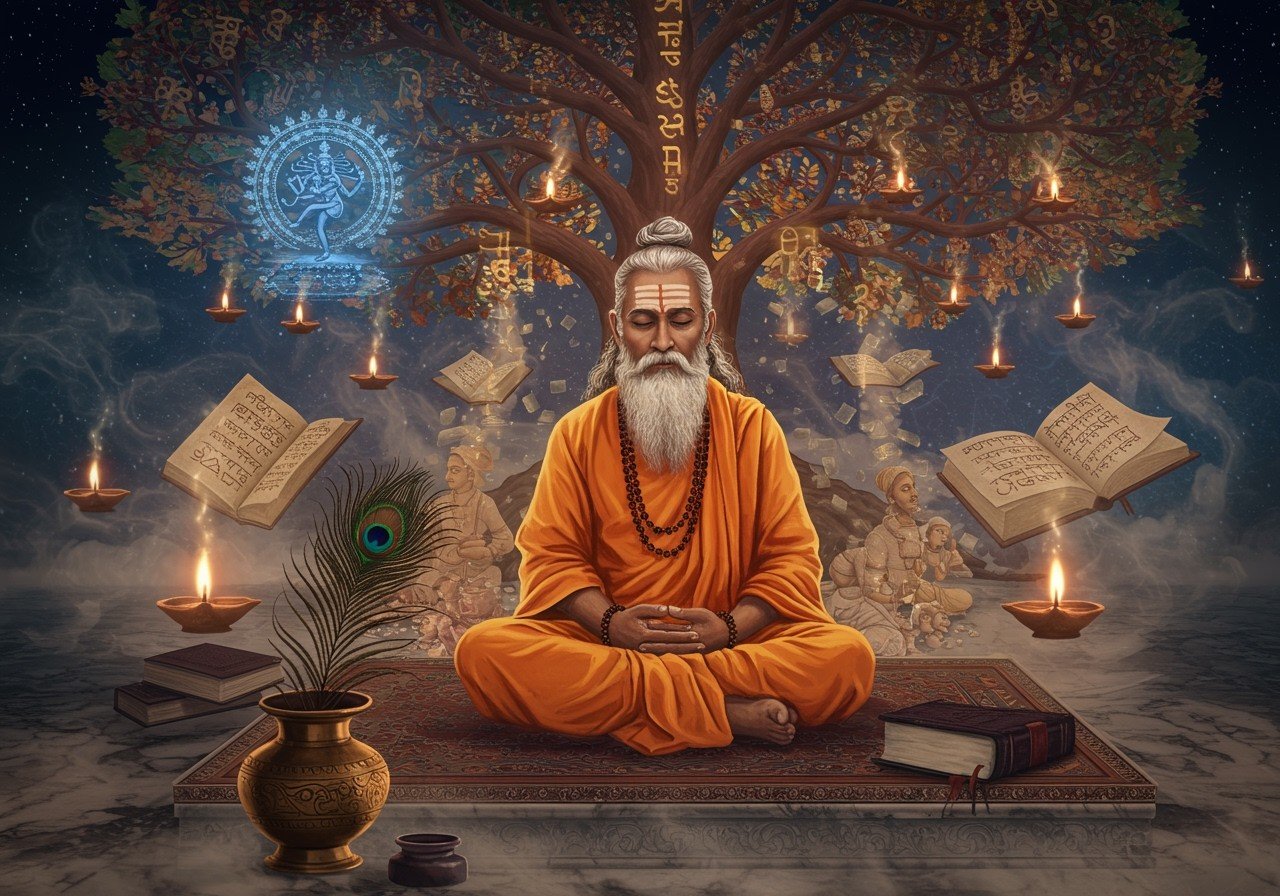Abhinavagupta: A Luminary of Kashmir Shaivism

Abhinavagupta, a prominent Indian philosopher, aesthetician, and mystic who flourished around 1014 CE, significantly shaped the landscape of Kashmir Shaivism. He championed the Pratyabhijna (recognition) school, which emphasizes the realization of the inherent unity between the individual soul, the universe, and Shiva, the ultimate reality.
Delving into Abhinavagupta’s Philosophy
- Kashmir Shaivism: Abhinavagupta’s profound understanding of Kashmir Shaivism distinguishes him as a remarkable scholar. Unlike dualistic traditions that separate the individual soul and the Supreme Being, Kashmir Shaivism asserts a monistic view. It posits that individual consciousness (Shiva) and universal consciousness (Shakti) are fundamentally one, a concept central to Abhinavagupta’s teachings. His commentaries on this tradition offer invaluable insights into its intricacies.
- Non-dualism and Monism: Synthesizing the wisdom of earlier thinkers, Abhinavagupta expounded on non-dualism (Advaita) and monism within the Shaiva tradition. He emphasized the interconnectedness of all existence, highlighting the singular nature of reality. His interpretation of these concepts continues to inspire philosophical inquiry.
- Pratyabhijna Philosophy: A staunch advocate of the Pratyabhijna school, Abhinavagupta clarified and disseminated its philosophy. This school centers on the recognition of the divine within oneself as the pathway to liberation. He demystified complex concepts, making them accessible to a wider audience.
- Tantrāloka and the Trika System: Tantrāloka, Abhinavagupta’s magnum opus, serves as a comprehensive guide to the philosophy and practices of the Trika system of Kashmir Shaivism. This monumental work explores various facets of the Shaiva tradition. It delves into the nature of reality, the spectrum of consciousness, paths to spiritual liberation, and ritualistic practices.
- Spanda: The Divine Pulsation: Abhinavagupta’s emphasis on Spanda, the divine pulsation or vibration, reveals his deep understanding of cosmic energy. He described Spanda as the dynamic interplay between consciousness (Shiva) and energy (Shakti). This concept explains the fundamental essence of the universe, offering a unique perspective on creation.
Check out our Bengali version of Srimad Bhagavad Gita. - Aesthetics and Rasa: Abhinavagupta enriched the understanding of aesthetics within Shaivism. His Abhinavabharati, a commentary on Bharata Muni’s Natyashastra (an ancient treatise on drama), elaborates on rasa, the aesthetic experience of emotions. He explored the interplay of art, beauty, and spiritual experience. He viewed rasa as a universal experience, capable of offering a glimpse of ultimate reality, similar to spiritual practice.
Enhance your puja with our Clay Doat for Saraswati Puja - Philosophy of Inwardness: Abhinavagupta’s analysis of the human person goes beyond the superficial. He promotes a vision of liberation and the highest good, seeing humans as manifestations of pure consciousness. His exploration of inwardness provides a path to understanding the divine that transcends limitations. Learn more about connecting with your inner self through our Hindu Philosophy Guide.
Abhinavagupta’s Enduring Legacy
Abhinavagupta’s contributions have left a lasting impact on Indian philosophy and aesthetics. His works continue to be studied and revered by scholars worldwide. He is recognized as a philosopher of inwardness, offering insights that bridge religious and cultural divides. His work provides a unique perspective on the understanding of the divine. Explore our beginner’s guide to Hindu Philosophy for more information.
Explore our range of Puja Samagri and enhance your spiritual journey. Deepen your understanding of Hindu traditions and practices with authentic products from Poojn.in.


